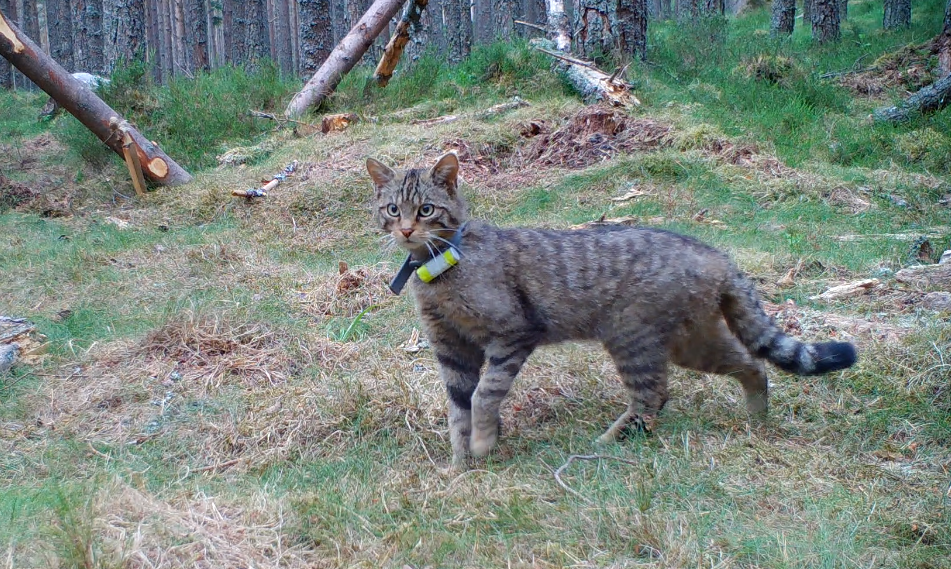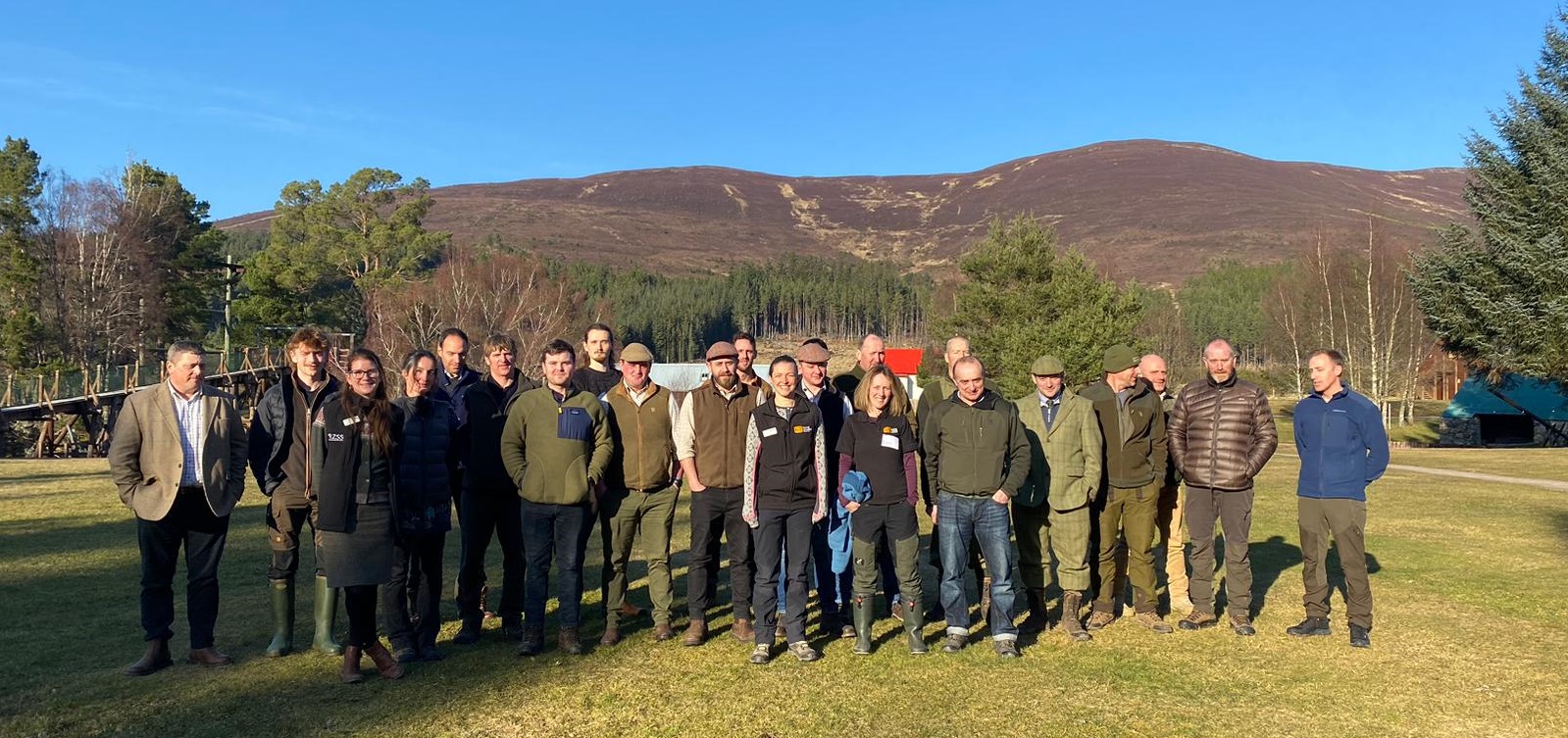Saving Wildcats works with land managers
Saving Wildcats aims to recover wildcat populations in close collaboration with, and for the benefit of, communities living alongside them.
To this end, a fundamental part of Saving Wildcats is working with landowners, farmers, foresters, gamekeepers and community members surrounding the project area of Badenoch and Strathspey, and beyond.
In advance of the first release of captive bred wildcats into the Cairngorms National Park (CNP), from 2021, face-to-face meetings were organised by Saving Wildcats to talk to people about the project and introduce the team members who would be out on the ground tracking wildcats across the release site. It was an opportunity for people to raise concerns they had around wildcats being released and how this might impact them. To date, Saving Wildcats has spoken with 67 individual landowners and managers. In addition, a number of community talks were held and, in 2022, 6,971 households in the project area received a postal survey, asking them for their views on potential wildcat releases and about domestic cat ownership. This helped Saving Wildcats to understand the public’s views on wildcats and to inform project decisions moving forwards.
In the early planning stages of the project, some concerns raised at these initial meetings and via the postal survey related to potential impacts on game bird management, including:
· The ability to identify a wildcat from a feral domestic cat during legal predator control activities
· Pheasant predation and disturbance of pheasants by wildcats
With this in mind, in March 2023, a workshop was organised for those that manage game and wildlife on estates within the CNP. This was to provide an opportunity for everyone, project staff and attendees, to consider how to ensure a fair coexistence between wildcats and people. It offered the chance to start addressing concerns that had been raised and for us all to discuss solutions to potential scenarios.
12 Gamekeepers from seven estates attended and there were some immediate agreements made, including updating the ‘wildcat identification: precautionary guidance document’ and an agreed communications strategy between the project and land managers, around how people would like to be informed of released wildcats using their land.
11 estates are currently signed up to receive WhatsApp, email or phone messages when collared cats are on their land through this communications strategy. The Saving Wildcats team have also worked closely with some estates on gathering camera trap data and receiving sightings from gamekeepers as they are out and about doing their work, which has been hugely beneficial for monitoring the visual condition of the wildcats.
At this preliminary workshop, gamekeepers also suggested to the project team that it would be a good idea to put reflective tape on the GPS-radio collars of released wildcats to assist with identification when they carry out legal predator control. The team implemented this suggestion, which has been very successful, as the tape is still attached to the collars at point of removal.

Not only have gamekeepers reported that this has been useful, but it has also aided the reporting of wildcats from the wider public and may also provide protective benefit against road traffic accidents. However, it should be noted that the collars are now being removed from some of the wildcats released in 2023, so a striped cat without a collar could still be a wildcat and the precautionary guidance should be followed
A follow-up workshop was then held in March 2024 to review the first year of releases; looking at what worked, what didn’t and what measures could be put in place for the second year of releases. This time 16 gamekeepers attended from 12 estates, as well as representatives from our partner organisations, including the Cairngorms National Park Authority (CNPA) and NatureScot. The presence of these partner organisations was crucial, so they could hear and understand concerns, as well as answer questions following the increase of wildcats present in the landscape.

The main agreed output from this workshop was to draft a ‘mitigation plan’, which is a document covering legislation and guidance that will, ultimately, cover all activities of land management in relation to the presence of wildcats. In addition, it will cover guidance around poultry keeping and how to best to predator-proof coops and pens. The guidance relating to wildcats and domestic poultry has been drafted and published, but others, especially in relation to gamebird operations, are still in the process of being produced with the hope they will be finalised in the next few months.
In the autumn of 2024, there were incidents of wildcats entering pheasant pens. Unfortunately, these situations were not resolved as quickly or as effectively as we would have liked as this was a new scenario that had to be worked through. We have learnt from these experiences so that, as a project, we can respond better in the future. Saving Wildcats is working with its partners to also consider how best to mitigate these situations and how we can work collaboratively with land managers to ensure these incidents are a rare occurrence. NatureScot has drafted guidance to cover these situations, which will be shared in advance of the next gamekeepers' workshop in March 2025.
We are deeply appreciative of the positive ongoing conversations and engagement with surrounding estates and the willingness to work together to ensure wildcats can thrive in this landscape.

